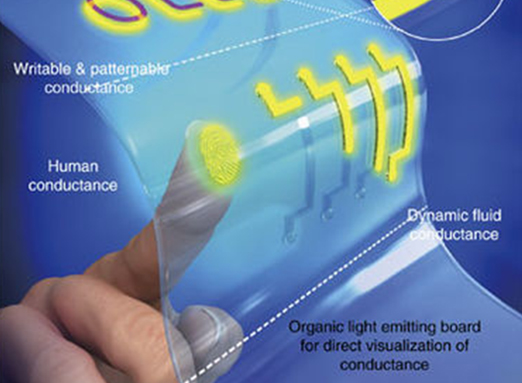New Thinner, Sensorless Core Display Technology is Developed
The next-generation device that can take the roles of both the sensor and display has been developed by a Yonsei research team.
A research team led by Professor Cheolmin Park (Yonsei University) announced that they developed a new sensorless core display technology that would immediately detect conductive biometric information, such as fingerprints, and show on the screen.
While the current OLED-based sensor display separates the sensor from the display, the OLEB, developed by the team recently, has one device that takes the roles of both the sensor and display. This simplifies the electric signal processing structure, allowing for a thinner display at 1/100th of the thickness of human hair (500 nm) with more flexibility. Furthermore, it also reduces the production process, saving production costs.

“This research developed a new concept, next-generation display that can detect biometric information like fingerprints and show images at the same time. As opposed to the previous studies, it secured technological originality by developing a display based on an AC electric field with the integration of detection and display. We expect that with further research and development, this technology can be implemented in mobile and automobile display, smart windows for advertisement, and medical diagnosis tools in that it can monitor and visualize biological information on cardiovascular diseases etc. on real-time basis,” said Professor Park on the significance of the research.
The research by Professor Park’s team was published in Nature Communication on April 13, 2017.
Recommended Articles
Professor Jong-Hyun Ahn
Novel technique for producing high-resolution micro-LED displays
Professor Seong Chan Jun
Professor Donghyun Kim
Array of hope: Up close and personal with mitochondria in neurons